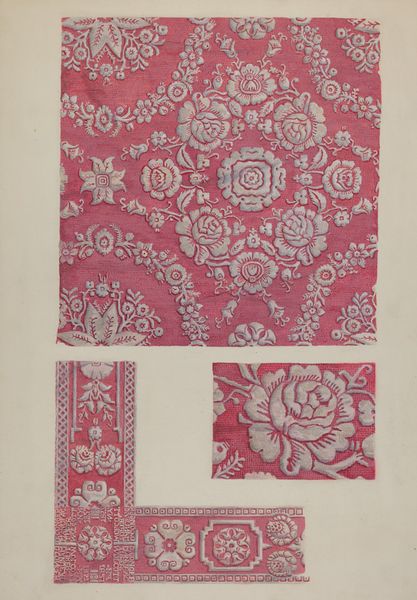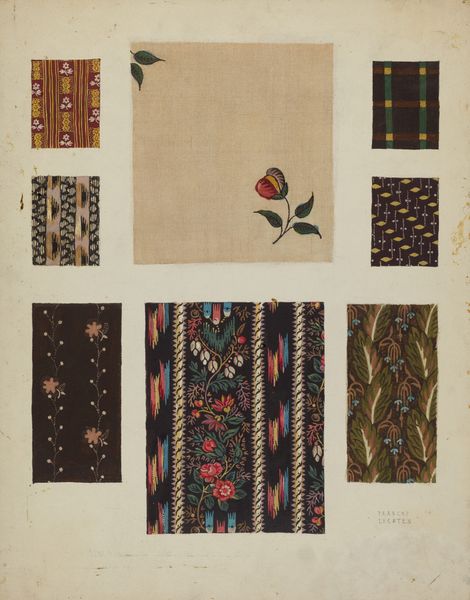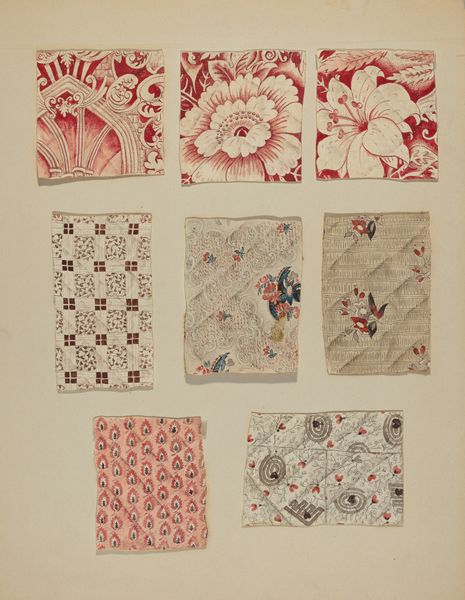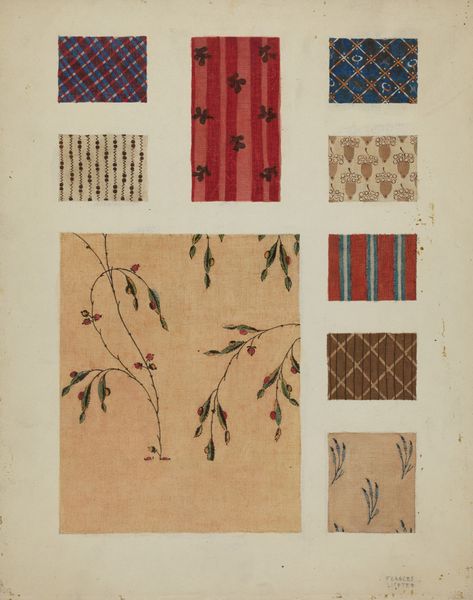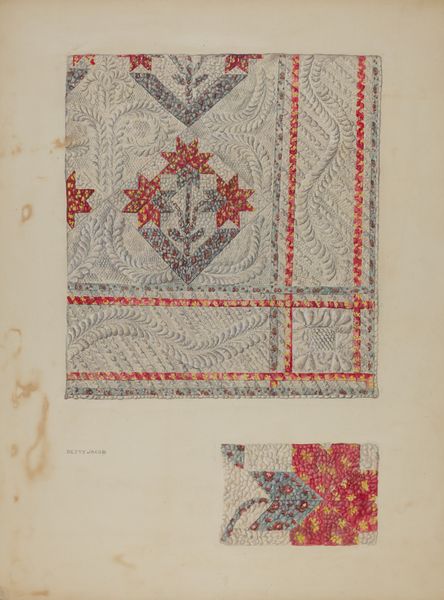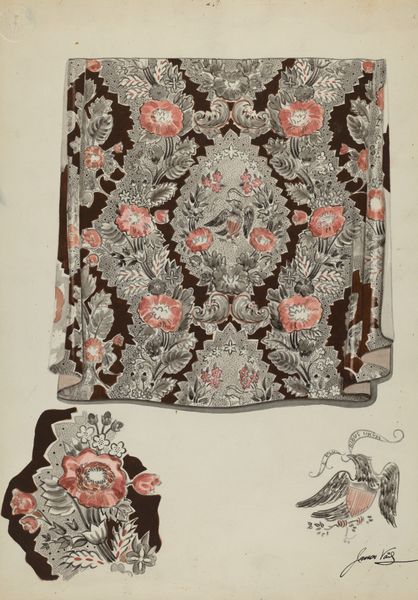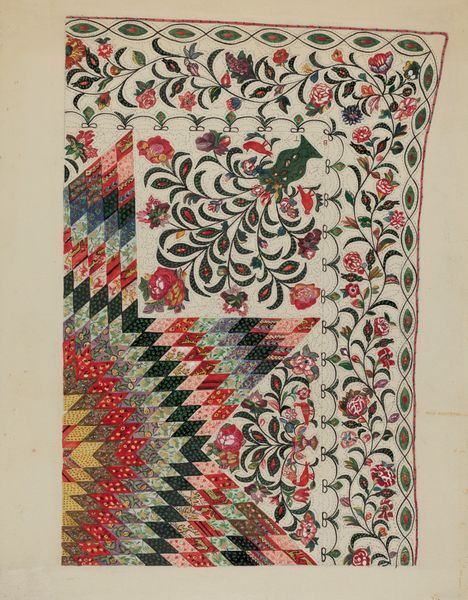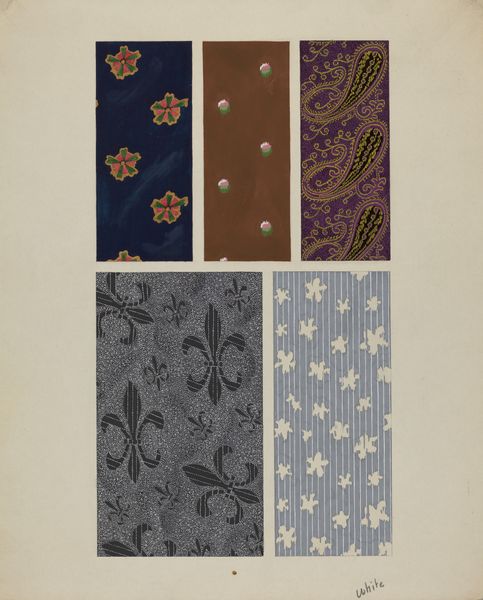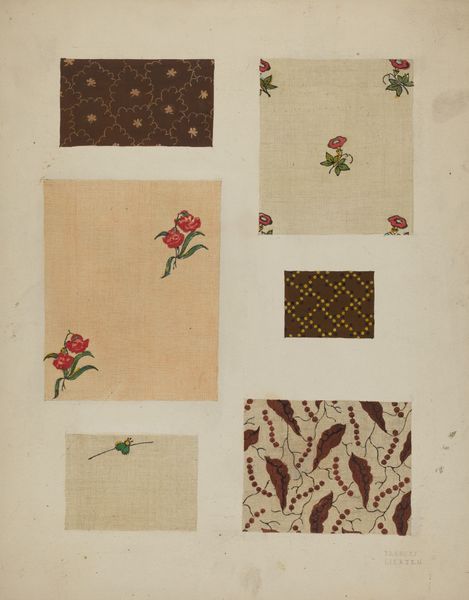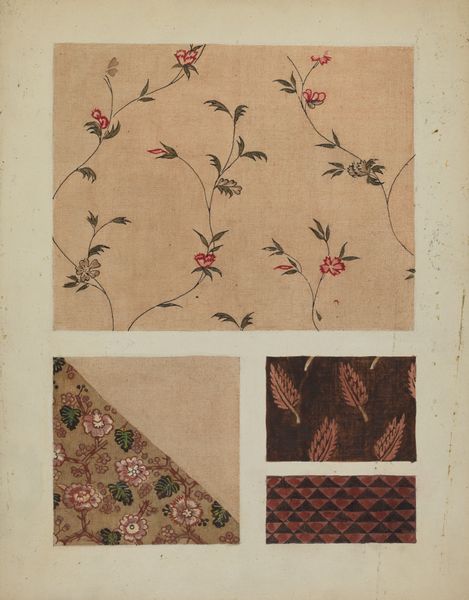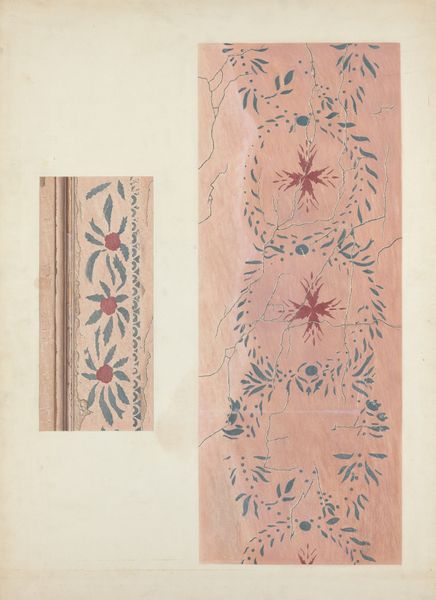
drawing, paper
#
drawing
#
paper
#
textile design
Dimensions: overall: 35.5 x 28 cm (14 x 11 in.)
Copyright: National Gallery of Art: CC0 1.0
Curator: Here we have J. Howard Iams’ “Chintz (From Quilt),” a watercolor drawing on paper from 1938, offering several textile design patterns. It's really quite evocative of the era, isn't it? Editor: My first impression is one of domesticity and perhaps a longing for a simpler time. The floral motifs, in particular, feel both comforting and a little melancholic. The limited color palette reinforces that mood, evoking feelings associated with the Great Depression. Curator: Indeed. Textile design in the late 1930s often served as an accessible form of art, bringing beauty into the everyday lives of people facing economic hardship. The designs, while decorative, also speak to a certain resilience and creativity in the face of adversity. Also it makes me think about intersectionality, the ways gender and class operate. I wonder about the woman who might've worked with these fabrics, what her life would have been. Editor: The visual symbols tell a rich story. The rose, for example, is loaded with connotations. From antiquity, across cultures, it's connected to love and transience, things that have endured the rise and fall of economies, social orders, personal empires. And, notice the repeated use of vertical stripes—they can symbolize stability, even confinement. In the bottom-right example, do those two forces create an uneasy tension? Curator: I agree. The composition certainly generates tension through juxtaposition. And the overall style is fascinating; it is related to decorative art and the patterns are aligned with the "pattern and decoration" movement which further developed in the 1970's. The recurring paisley motifs speak to colonial histories, reminding us how global trade has shaped aesthetic sensibilities. Editor: Absolutely. The paisley echoes throughout many eras and spaces; to me it suggests a visual journey from ancient cultures of the East to the quilt of middle-class American life. These kinds of patterns persist for complex reasons across all spaces and groups. Curator: It's remarkable how one drawing encapsulates such diverse threads of social and art history. The simple medium—watercolor on paper—belies its complex narratives. Editor: Exactly. It's a testament to the enduring power of symbols and our collective memory as viewers interpreting them. It is more than just decoration, this reveals so much about what has been valued aesthetically.
Comments
No comments
Be the first to comment and join the conversation on the ultimate creative platform.
